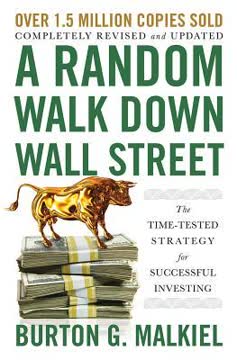Key Takeaways
1. Value investing focuses on buying undervalued assets for long-term gains
Value investors tend to be leery of large premiums paid by markets for growth opportunities and try to find their best bargains in more mature companies that are out of favor.
Essence of value investing: Value investors seek to buy assets for less than their intrinsic worth, focusing on the value of existing assets rather than future growth potential. This approach is rooted in the belief that markets often misprice assets, particularly those that are out of favor or overlooked.
Key principles of value investing:
- Focus on intrinsic value rather than market sentiment
- Look for a margin of safety between price and estimated value
- Prefer established companies with tangible assets over speculative growth stocks
- Maintain a long-term perspective, allowing time for value to be realized
Value investors like Benjamin Graham and Warren Buffett have demonstrated the potential for superior returns using this approach over long periods. However, it requires patience, discipline, and the ability to go against prevailing market trends.
2. Passive screening identifies undervalued stocks using financial ratios
Any stock that passes all 10 screens, Graham argued, would make a worthwhile investment.
Quantitative approach: Passive screening is a systematic method of identifying potentially undervalued stocks using financial ratios and other quantitative criteria. This approach, pioneered by Benjamin Graham, aims to remove emotion from the investment process and focus on objective measures of value.
Common value investing screens include:
- Low price-to-earnings (P/E) ratio
- Low price-to-book (P/B) ratio
- High dividend yield
- Low price-to-sales ratio
- Strong balance sheet metrics (e.g., low debt-to-equity ratio)
While these screens can be effective in identifying potential value opportunities, they have limitations. They may not capture qualitative factors, such as management quality or competitive advantages. Additionally, the effectiveness of specific screens can vary over time as market conditions change. Successful investors often combine multiple screens and supplement them with qualitative analysis.
3. Contrarian investing capitalizes on market overreactions to bad news
If you are right about markets overreacting to recent events, expectations will be set too high for stocks that have been performing well and too low for stocks that have been doing badly.
Exploiting market psychology: Contrarian investing is based on the premise that markets often overreact to both good and bad news, creating opportunities to profit from the subsequent correction. This approach requires the courage to go against prevailing market sentiment and the patience to wait for a reversal.
Contrarian strategies include:
- Buying stocks that have experienced significant price declines
- Investing in out-of-favor industries or sectors
- Focusing on companies with temporarily depressed earnings
- Avoiding "hot" stocks or sectors that may be overvalued
Research has shown that contrarian strategies can generate excess returns over long periods. However, they can also lead to prolonged underperformance in the short term and require a strong stomach for volatility. Successful contrarian investors combine their contrary view with thorough fundamental analysis to avoid "value traps" – stocks that are cheap for good reasons.
4. Activist value investing seeks to catalyze change in underperforming companies
In activist value investing, you acquire a large stake in an undervalued or poorly managed company, and then use your position as a large stockholder to push for changes that will release this value.
Catalyst for change: Activist value investors take a more proactive approach, seeking to unlock value in underperforming companies through direct intervention. This strategy involves acquiring a significant ownership stake and then advocating for changes in corporate strategy, capital allocation, or management.
Common activist strategies include:
- Pushing for operational improvements or cost-cutting measures
- Advocating for the sale or spin-off of underperforming divisions
- Demanding increased shareholder returns through dividends or buybacks
- Seeking changes in board composition or management
Activist investing can generate substantial returns when successful, but it also carries additional risks. It requires significant capital to acquire a meaningful stake, specialized expertise in corporate governance and strategy, and the ability to navigate complex legal and regulatory environments. The success of activist campaigns often depends on garnering support from other shareholders and effectively communicating a compelling value creation plan.
5. Successful value investing requires patience, discipline, and a long-term outlook
To succeed by buying shares in these companies, you need to have the capacity to hold the stocks for several years.
Psychological fortitude: Value investing often involves buying assets that are out of favor and may continue to underperform in the short term. Success requires the discipline to stick to a well-defined strategy and the patience to allow time for value to be realized.
Key traits of successful value investors:
- Ability to think independently and resist herd mentality
- Emotional stability to withstand short-term price volatility
- Willingness to hold unpopular or controversial positions
- Focus on long-term fundamentals rather than short-term noise
- Continuous learning and adaptation to changing market conditions
The long-term nature of value investing can be challenging for both individual and professional investors. Individual investors may be tempted to abandon their strategy during periods of underperformance, while professional managers may face pressure from clients or employers to deliver short-term results. Developing a clear investment philosophy and communicating it effectively to stakeholders can help maintain discipline during difficult periods.
6. Value investors use tools like accounting checks and margin of safety
The margin of safety (MOS) is the buffer that value investors build into their investment decision to protect themselves against risk.
Risk mitigation: Value investors employ various tools and techniques to reduce the risk of permanent capital loss and improve the odds of successful investments. These methods help address the inherent uncertainty in valuing companies and provide a buffer against errors in analysis or unforeseen events.
Key value investing tools:
- Accounting checks: Scrutinizing financial statements for potential red flags or distortions
- Normalized earnings: Using average earnings over multiple years to smooth out cyclical effects
- Tangible book value: Focusing on easily valued physical assets rather than intangibles
- Margin of safety: Requiring a significant discount to estimated intrinsic value before investing
- Competitive moat analysis: Assessing a company's sustainable competitive advantages
The margin of safety concept is particularly crucial, as it acknowledges the potential for errors in valuation or unexpected negative developments. By requiring a substantial discount to estimated value, investors create a cushion that can protect against losses and potentially enhance returns. The appropriate margin of safety may vary depending on the certainty of the valuation and the perceived risks of the investment.
7. Good companies are not always good investments; bad companies can outperform
The excellent companies may be in better shape financially, but the unexcellent companies would have been much better investments, at least over the time period considered (1981–1985).
Valuation matters: This counterintuitive finding highlights the critical importance of valuation in investment returns. High-quality companies with strong financials and excellent management may be poor investments if their stock prices already reflect or exceed their intrinsic value. Conversely, troubled companies can deliver superior returns if their stock prices discount an overly pessimistic future.
Factors contributing to this phenomenon:
- Market expectations: Prices reflect future expectations, not just current performance
- Mean reversion: Extreme performance (good or bad) tends to normalize over time
- Turnaround potential: Poorly performing companies have more room for improvement
- Investor psychology: Neglected or disliked stocks may be systematically undervalued
This observation underscores the importance of separating the quality of a business from its attractiveness as an investment. Value investors often focus on companies that are temporarily distressed or out of favor, seeking opportunities where the market's pessimism has created a significant gap between price and intrinsic value. However, this approach requires careful analysis to distinguish between companies with fixable problems and those facing permanent decline.
8. Market efficiency does not preclude opportunities for skilled value investors
Even with this definition of value investing, there are three distinct strands that we see in value investing.
Skill and effort matter: While markets are generally efficient, they are not perfectly so. Opportunities for outperformance exist for investors willing to do the hard work of thorough analysis and who possess the temperament to act on their convictions.
Sources of potential inefficiency:
- Information asymmetry: Some investors may have access to better or more timely information
- Behavioral biases: Systematic errors in human decision-making can create mispricing
- Institutional constraints: Regulatory requirements or mandates may force some investors to act suboptimally
- Liquidity preferences: The need for short-term liquidity can create opportunities for long-term investors
- Complexity: Some assets or situations may be too complex for most investors to analyze properly
Successful value investors combine a deep understanding of business and finance with the ability to think independently and act contrarian when warranted. They often focus on areas of the market that are less efficiently priced, such as small-cap stocks, distressed securities, or complex situations like corporate spin-offs. By developing specialized expertise and maintaining a disciplined approach, skilled investors can potentially generate superior risk-adjusted returns over long periods.
Last updated:
FAQ
What's Investment Philosophies by Aswath Damodaran about?
- Exploration of Strategies: The book delves into various investment strategies and the philosophies behind them, emphasizing the importance of aligning these with individual characteristics and market conditions.
- Market Behavior Insights: It examines how human behavior and market efficiency impact investment decisions, categorizing different philosophies like value and growth investing.
- Practical Framework: Damodaran provides a structured approach to developing an investment philosophy, focusing on risk, valuation, and the investment process.
Why should I read Investment Philosophies by Aswath Damodaran?
- Comprehensive Overview: The book offers a thorough examination of various investment philosophies, valuable for both novice and experienced investors.
- Practical Insights: It provides advice on developing a personal investment philosophy that suits individual risk tolerance and goals.
- Behavioral Finance Integration: Insights from behavioral finance help readers recognize psychological pitfalls, improving decision-making.
What are the key takeaways of Investment Philosophies by Aswath Damodaran?
- Philosophy Importance: A well-defined investment philosophy is crucial for long-term success, helping investors remain disciplined and focused.
- Risk Assessment: Understanding risk is fundamental, with emphasis on differentiating between diversifiable and non-diversifiable risks.
- Valuation Techniques: Mastering intrinsic and relative valuation methods is essential for assessing investment worth and making informed decisions.
What is an investment philosophy according to Investment Philosophies by Aswath Damodaran?
- Coherent Framework: An investment philosophy is a coherent way of thinking about markets and investor behavior, guiding decision-making processes.
- Behavioral Insights: It should incorporate views on human behavior and market efficiency, recognizing common investor mistakes.
- Personal Alignment: The philosophy must align with the investor's characteristics, risk tolerance, and market conditions for effective strategy adherence.
How does Investment Philosophies by Aswath Damodaran categorize investment strategies?
- Market Timing vs. Security Selection: Strategies are categorized into market timing and security selection, each with various philosophies and approaches.
- Activist vs. Passive Investing: The book distinguishes between activist strategies, which involve influencing company performance, and passive strategies.
- Time Horizon Considerations: Strategies are also differentiated by their required time horizons, from short-term gains to long-term potential realization.
What is the significance of risk in Investment Philosophies by Aswath Damodaran?
- Understanding Risk: Risk is an integral part of investing, and understanding it is essential for developing a sound investment philosophy.
- Types of Risk: The book distinguishes between diversifiable and non-diversifiable risks, aiding in portfolio diversification and risk management.
- Risk Measurement Models: Various models, including the Capital Asset Pricing Model (CAPM), are discussed for evaluating expected returns based on risk.
How does Investment Philosophies by Aswath Damodaran define valuation?
- Intrinsic Value: Valuation involves estimating an asset's intrinsic value based on expected future cash flows, discounted to present value.
- Relative Valuation: This method compares an asset's market price to similar assets, identifying mispriced opportunities.
- Contingent Cash Flows: For uncertain cash flows, such as options, option pricing models are suggested to account for unique asset characteristics.
What are the different types of risks discussed in Investment Philosophies by Aswath Damodaran?
- Equity Risk: This refers to the uncertainty in returns on equity investments, influenced by market conditions and investor behavior.
- Default Risk: Pertains to the likelihood of not receiving promised cash flows, relevant for fixed-income investments.
- Market Risk: Affects a broad range of investments due to economic factors, essential for effective portfolio management.
What are some common investment strategies mentioned in Investment Philosophies by Aswath Damodaran?
- Value Investing: Focuses on identifying undervalued stocks through fundamental analysis, often involving low price-to-earnings ratios.
- Growth Investing: Targets companies with high growth potential, with the belief that future earnings will justify current valuations.
- Arbitrage Strategies: Involves exploiting price discrepancies between markets or assets, potentially yielding profits with minimal risk.
What are the best quotes from Investment Philosophies by Aswath Damodaran and what do they mean?
- "Who wants to be an average investor?": Highlights the desire to outperform the market, setting the tone for exploring superior strategies.
- "The key to success in investing may lie not in knowing what makes others successful but in finding out more about yourself.": Emphasizes self-awareness in investing, crucial for long-term success.
- "In the absence of an investment philosophy, you will tend to shift from strategy to strategy.": Warns against lacking a coherent philosophy, which can lead to impulsive, harmful decisions.
How does Investment Philosophies by Aswath Damodaran address market efficiency?
- Market Efficiency Concept: Suggests that asset prices reflect all available information, challenging the ability to consistently outperform the market.
- Types of Efficiency: Discusses weak, semi-strong, and strong forms of market efficiency, each based on the information reflected in prices.
- Implications for Investors: If markets are efficient, diversification and passive strategies may be more effective than market timing or stock picking.
How can I apply the lessons from Investment Philosophies by Aswath Damodaran to my own investing?
- Assess Your Characteristics: Evaluate personal characteristics, financial situation, and market beliefs to identify a suitable investment philosophy.
- Choose a Strategy: Select a strategy that aligns with your assessment, considering time horizon and capital requirements.
- Stay Informed and Adapt: Continuously educate yourself and adapt your philosophy as circumstances change, ensuring alignment with goals and market conditions.
Review Summary
Investment philosophies receives mostly positive reviews, with readers praising its quantitative analysis of investment strategies and applicability to various skill levels. Readers appreciate the book's focus on practical applications rather than theory, and its comprehensive review of financial market papers. Some find it essential reading for gaining a clear vision of effective investment strategies. However, a few readers note that the book could be better organized and may not cover all investment philosophies comprehensively. Overall, it's considered valuable for developing a personal investment approach.
Similar Books










Download PDF
Download EPUB
.epub digital book format is ideal for reading ebooks on phones, tablets, and e-readers.








